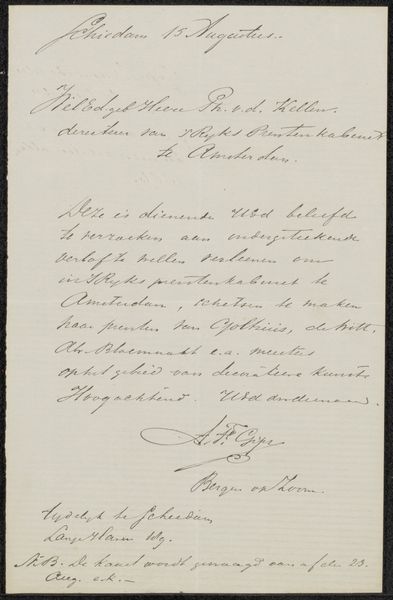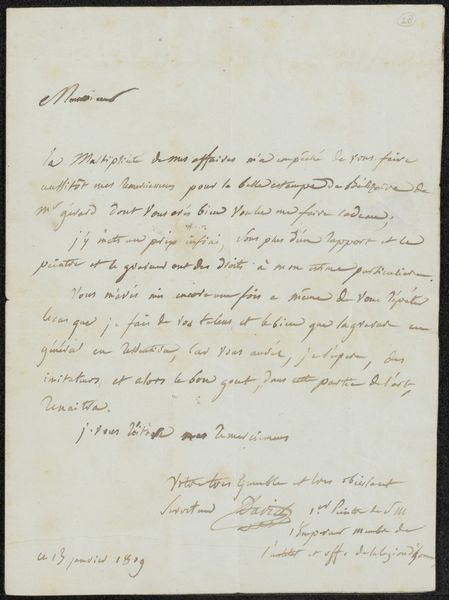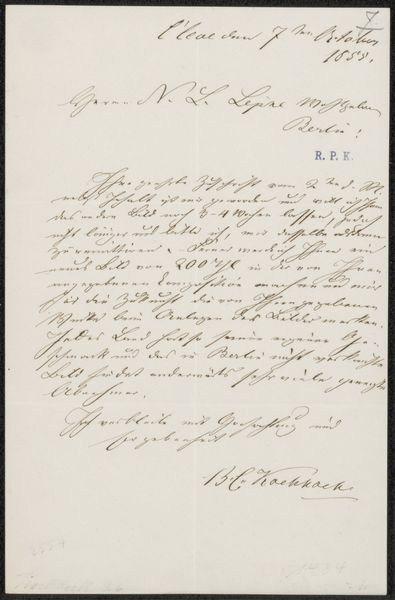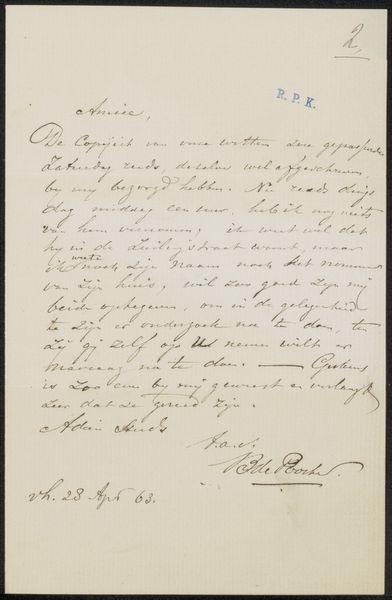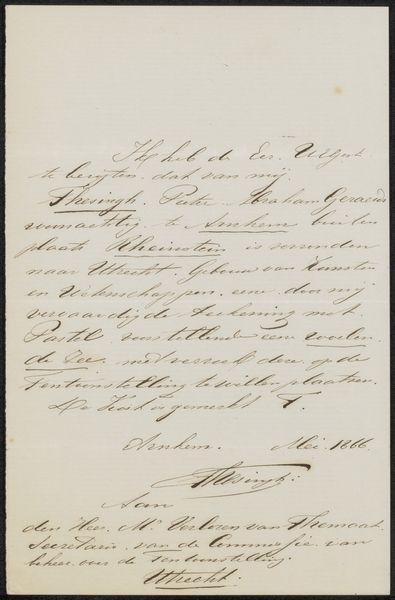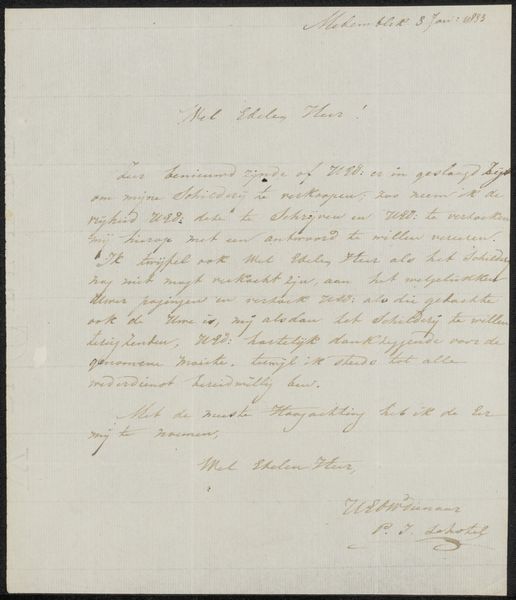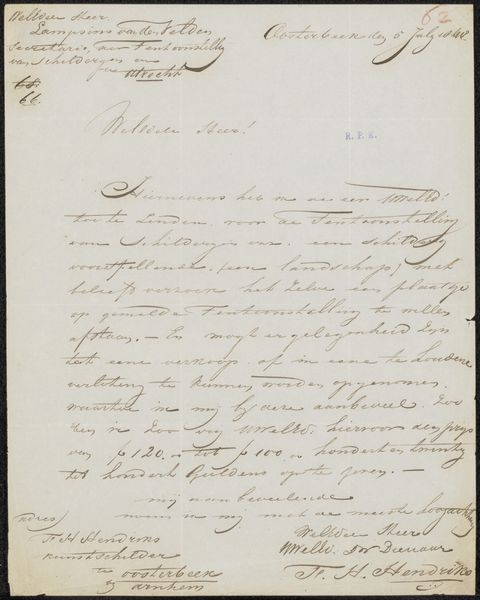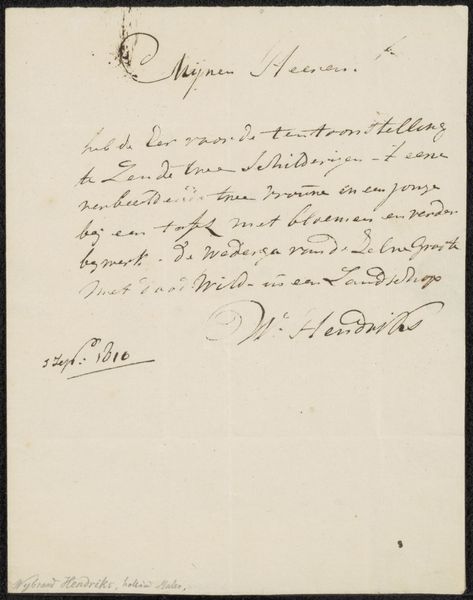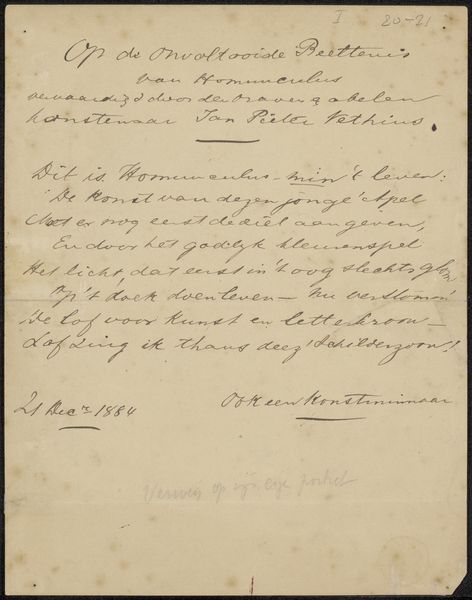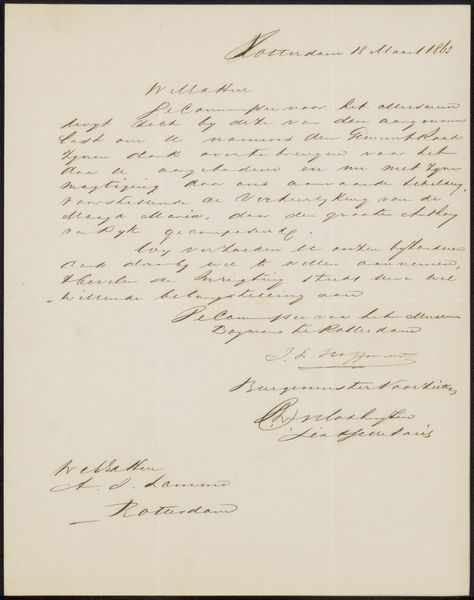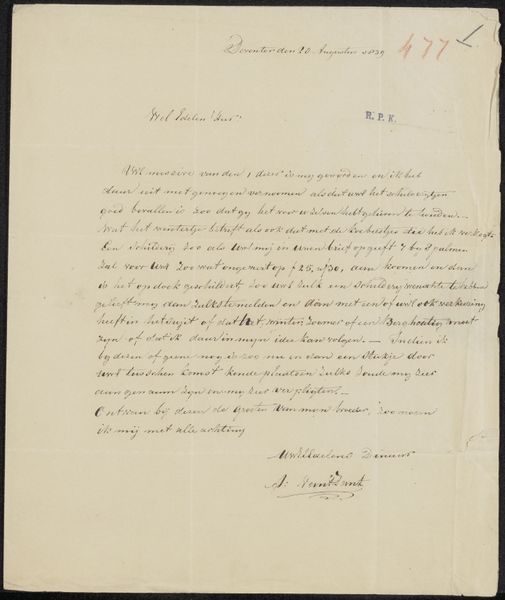
drawing, paper, ink
#
portrait
#
drawing
#
paper
#
ink
#
realism
Copyright: Rijks Museum: Open Domain
Editor: So, this is "Brief aan anoniem," or "Letter to Anonymous," possibly from 1860 by Alexander Mollinger. It's an ink drawing on paper. Looking at it, I’m struck by how formal it seems, yet so personal, like a secret glimpse into a bygone era. What do you see in this piece? Curator: Well, immediately, I see layers of cultural coding. The letter *itself* acts as a powerful symbol. Consider how handwriting once signified social standing, education, and even character. Mollinger meticulously crafts each stroke, aware of how his penmanship communicates beyond the words themselves. Can you decipher some of what it says? Editor: It looks like he’s describing and pricing some drawings for sale: landscapes and a scene near the shore. I noticed the pricing! Thirty, forty, even sixty guilders... it seems so specific. Curator: Precisely! Those figures carry weight. Currency always reflects economic and societal values. Consider how the perceived value of art has transformed, and how, even then, landscape scenes held a certain appeal, mirroring a burgeoning sense of national identity. The act of naming places—Zwolle, for instance—connects this letter to tangible locations, anchoring it within a lived experience. Editor: That's a really interesting way to put it! I hadn’t considered that simply naming a place could have such power. Curator: Visual and textual symbols intertwine. Letters create narratives, and even now offer insight into people's motivations and desires in that historical period. What lasting impressions do you get? Editor: I guess the directness surprises me; it's like peering into someone’s private correspondence, and also how business was managed then, making it more personable. Curator: Yes. Everyday encounters of that period, captured through the iconography of text, offering invaluable clues to unlocking our past and its symbols.
Comments
No comments
Be the first to comment and join the conversation on the ultimate creative platform.

